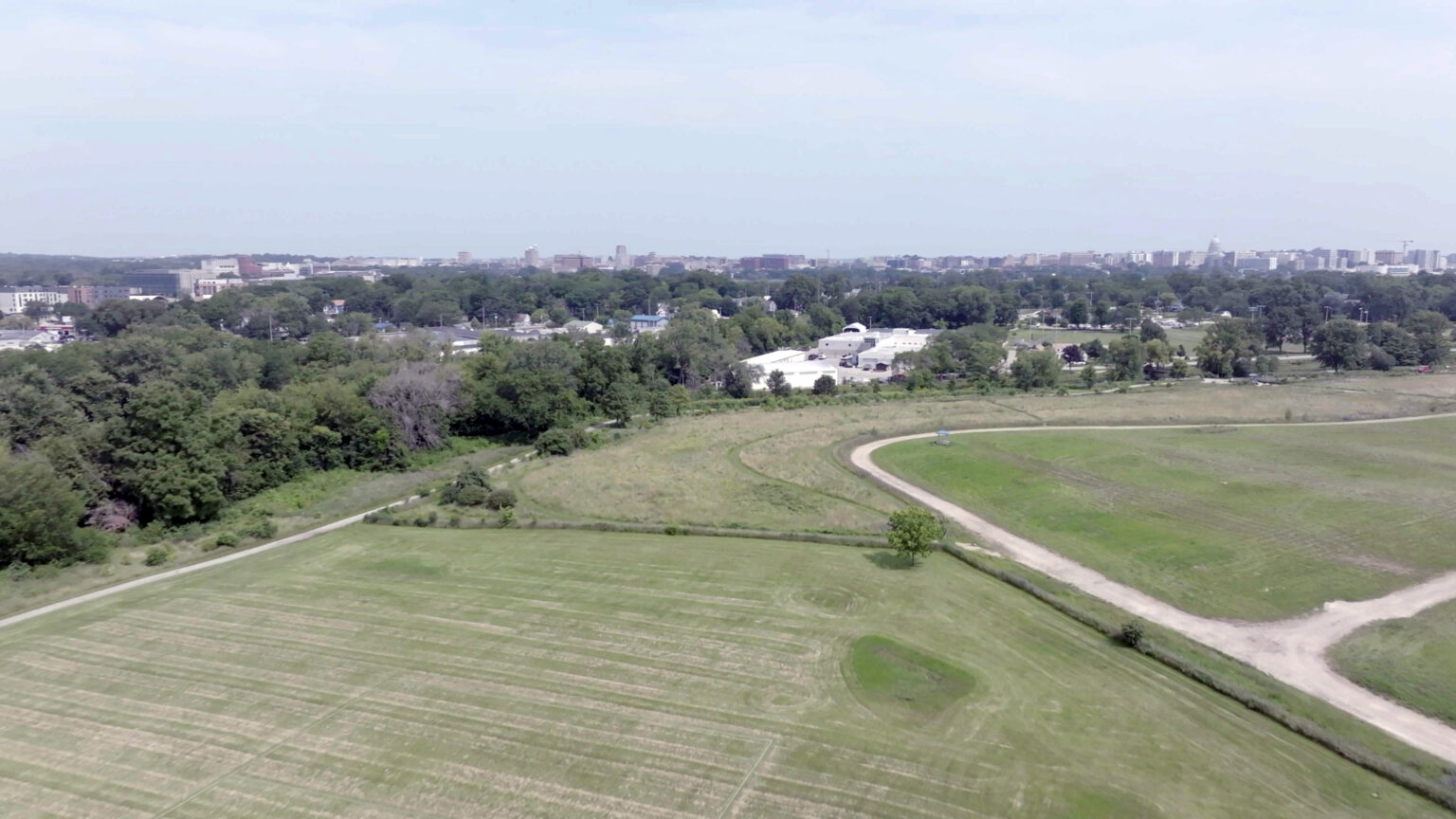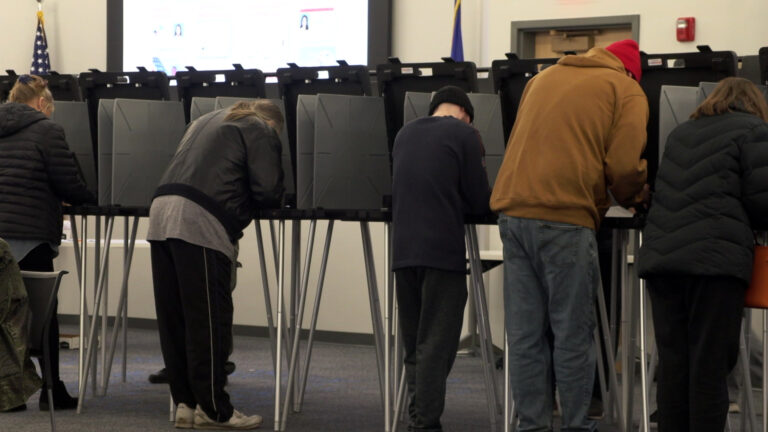As Dane County keeps growing, what does that mean for Republicans winning statewide races in Wisconsin?
The population of deep blue Dane County — anchored by the state capital of Madison and a fast growing region with liberal voters in droves — has increased substantially in the years following Donald Trump's narrow 2016 victory in Wisconsin, and Republicans have lost most statewide elections since.
The Badger Project
August 29, 2024 • South Central Region

A wide swath of central Madison, including the University of Wisconsin-Madison campus and the city's downtown with the Wisconsin State Capitol, are seen on July 11, 2024. The city is at the center of Dane County, which has experienced the largest population growth in Wisconsin since 2020. (Credit: PBS Wisconsin)

Wisconsin Democrats are on a winning streak in recent elections, and Dane County is providing much of the fuel.
The state is one of the most competitive in the country, and as the 2024 election approaches, the fastest-growing county there has Republicans losing sleep.
In 2016, when Donald Trump won the state on his way to the presidency, Dane County had a population of about 532,000, according to the U.S. Census. More than 80% of registered voters in the county cast a ballot, the vast majority for the Democrat Hillary Clinton.
In 2020, when Joe Biden defeated then-President Trump in the state and nationwide, the county’s population sat at about 562,000. That year, nearly 90% of registered voters in the county cast a ballot, the vast majority for the Democrat Biden.
Now it has a population of more than 575,000, according to the most recent Census estimate.
“With increased population and voters, Dane County obviously becomes more important,” said Ed Miller, a political science professor emeritus at UW-Stevens Point. “Democrats have the advantage, but turnout and the percent of Republicans in the county make a difference. While a small percentage, (Dane County) Republicans can make a difference in a state-wide contest.”
Because of its large population and sky-high turnout, the county is also a major source of votes for the GOP, noted UW-Madison political science professor Barry Burden.
“Dane typically delivers the third-highest number of Republican votes among the state’s 72 counties,” Burden wrote in an email to The Badger Project. “There was some finger-pointing among Republicans after Tim Michels lost the gubernatorial election (in 2022) that his campaign had overlooked this fact and neglected Dane County.”
Running against Gov. Tony Evers, Michels won just 20.7% of the vote there in 2018. Conservative Justice Dan Kelly in 2023, running for reelection on the Wisconsin Supreme Court, won just 18% of the Dane County vote when he lost badly to the left-leaning Janet Protasiewicz, who got a whopping 82% there.
Republicans need to win at least 23% of the county to have a chance statewide, new chairman of the Dane County Republican Party, Brandon Maly, told the Wisconsin State Journal in July.
In pulling out a narrow victory in Wisconsin in 2016, Trump got that 23% in Dane County, to Hillary Clinton’s 70%. Trump dipped slightly to 22.9% in 2020, while Biden rose to more than 75%. Third-party candidates gobbled up the rest.
But Republican Sen. Ron Johnson, a political survivor and outlier, won the state in 2022 carrying only 22.7% of Dane County, to Democrat Lt. Gov. Mandela Barnes’ 77% there.
In 2020, Biden got more than 260,000 votes in Dane County, about 42,000 more votes than Hillary Clinton won there in 2016. Trump increased his vote total in the county by about 7,500 from 2016 to 2020.
That net gain for Democrats in Dane County did most of the heavy lifting in flipping Trump’s 20,000-vote Wisconsin victory in 2016 to a 20,000-vote loss in 2020, as the Republican wasn’t able to make up the difference elsewhere.
While Dane County has gained population, about 2.5% since 2020, similarly liberal Milwaukee County has lost people, also about 2.5% since 2020.
But that population loss in the state’s most populous county hasn’t hurt Democrats much, at least not so far.
Since Trump’s shocking 2016 win — an election year in which his opponent, Hillary Clinton, never visited Wisconsin — Republicans have won only two major, statewide races, and just one in the last five years: Brian Hagedorn’s razor-thin squeaker to the Wisconsin Supreme Court in 2019 and Johnson’s 1-point reelection in 2022.
Along with the presidency, the Wisconsin GOP has lost the race for governor and attorney twice, as well as two races to the Wisconsin Supreme Court. Republicans also lost the race for Democrat Tammy Baldwin’s senate seat in 2018. And she’s been enjoying comfortable leads in the polls in her 2024 reelection bid.
The GOP can still win statewide elections, but another factor is working against them, on top of Dane County’s population growth, said Joe Handrick, a former Republican state representative from Minocqua. He also blames the “Trump Effect,” which has seen Republicans doing better in lower-populated rural areas, but worse in higher-populated, suburban ones. The former president’s waning popularity in the suburbs of Milwaukee, a traditional stronghold of Republican votes, has been a significant driver their recent losses, he said.
Notably, another factor in recent Democratic Party dominance in statewide races is their massive advantage in fundraising since Ben Wikler took over as party chairman in 2019 following the loss to Hagedorn.
After court decisions and the Republican-controlled state Legislature removed some restrictions on campaign donations, Democrats have now turned the tables, driving Brinks trucks through the new loophole to raise millions from in state and out, swamping GOP candidates in the fundraising game.
The Badger Project is a nonpartisan, citizen-supported journalism nonprofit in Wisconsin.
 Passport
Passport











Follow Us